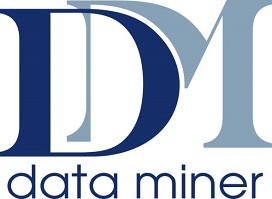About this course
Introduction to Containers, Kubernetes, and Red Hat OpenShift (DO180) introduces building and managing Docker containers for deployment on a Kubernetes cluster. This course helps students build core knowledge and skills in managing containers through hands-on experience with Docker, Kubernetes, and Red Hat OpenShift Container Platform.
This course is based on Red Hat OpenShift Container Platform 3.5 and Red Hat Enterprise Linux 7.
Audience profile
- Developers who wish to containerize software applications
- Administrators who are new to container technology and container orchestration
- Architects who are considering using container technologies in software architectures
This course is intended to expose students to container and container orchestration technologies, such as Docker, Kubernetes, and Red Hat OpenShift. Students learn how to containerize software applications and services. Containers are rapidly becoming a deployment technology of choice in organizations adopting DevOps principles and practices. Moving applications and services from traditional deployment platforms to container deployments make the applications deployable on a single clustered cloud architecture instead of many disparate sets of hardware configurations.
While Red Hat has created this course in a way intended to benefit our customers, each company and infrastructure is unique, and actual benefits may vary.
At course completion
- Container, Docker, and Red Hat OpenShift architecture
- Create containerized services
- Manage containers and container Images
- Create custom container images
- Deploy containerized applications on Red Hat OpenShift
- Deploy multi-container applications
Course introduction
Introduce and review the course.
Get started with container technology
Describe how software can run in containers orchestrated by Red Hat OpenShift Container Platform.
Create containerized services
Provision a server using container technology.
Manage containers
Manipulate pre-build container images to create and manage containerized services.
Manage container images
Manage the life cycle of a container image from creation to deletion.
Create custom container images
Design and code a Docker file to build a custom container image.
Deploy containerized applications on Red Hat OpenShift
Deploy single container applications on Red Hat OpenShift Container Platform.
Deploy multi-container applications
Deploy applications that are containerized using multiple container images.
Troubleshoot containerized applications
Troubleshoot a containerized application deployed on Red Hat OpenShift.
Comprehensive review of Introduction to Container, Kubernetes, and Red Hat OpenShift
Demonstrate how to containerize a software application, test it with Docker, and deploy it on a Red Hat OpenShift cluster.
Red Hat recommends the following:
- Be able to use a Linux terminal session and issue operating system commands
- Have Red Hat Certified System Administrator (RHCSA) certification or equivalent experience
- Have experience with web application architectures and their corresponding technologies
Auditoriniai mokymai
| Pradžios data | Trukmė, d. | Kurso pavadinimas | Kaina, € | Statusas |
| 2023-02-13 | 5 | 20410: Installing and Configuring Windows Server 2012 | 1500 | |
| 2023-02-21 | 5 | 20412: Configuring Advanced Windows Server 2012 Services | 1500 | |
| 2023-03-06 | 5 | 20411: Administering Windows Server 2012 | 1500 | |
| 2023-03-27 | 5 | 10969: Active Directory Services with Windows Server | 1500 | |
| Užklausti | 5 | Administering the Web Server (IIS) Role of Windows Server (nuotolinė klasė - ENG) | 1500 | Organizuojamas |
| Užklausti | 5 | Installing and Configuring Windows Server 2012 (nuotolinė klasė - ENG) | 1500 | Organizuojamas |
| Užklausti | 5 | Fundamentals of a Windows Server Infrastructure (nuotolinė klasė - ENG) | 1500 | Organizuojamas |
| Užklausti | 5 | Active Directory Services with Windows Server (nuotolinė klasė - ENG) | 1500 | Organizuojamas |

